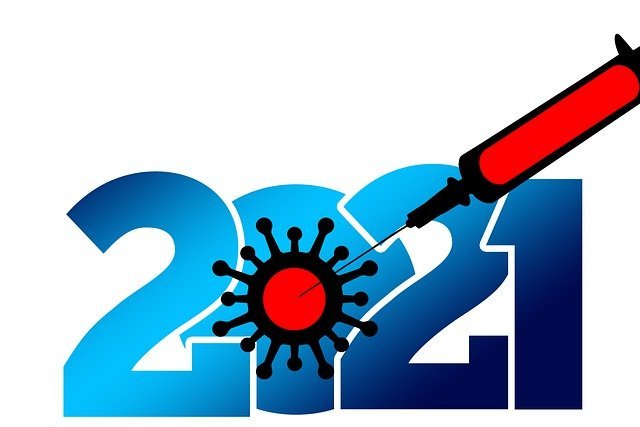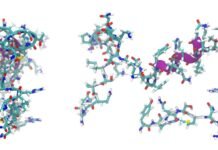This December, the FDA authorized emergency use treatments for COVID-19. As a result, there are two vaccine options to aid the fight against the pandemic, Pfizer and Moderna.
The CDC now supports the administration of these alternatives to high-risk groups in the US. Health care workers and those living in long-term care facilities are the first to receive the immunization. The general population is the next in line.
However, it can be confusing to have two vaccination choices against the same virus.
The variations are a result of the quick development procedures to combat the emergency. Let’s examine how Moderna and Pfizer compare to get you more acquainted with the current trends.
Basic Information
Since the two vaccines entered widespread use, the information about them became readily available to the public. Here’s what we know so far.

The Ingredients
Both companies used mRNA as the main component of their products. This ingredient teaches your cells how to create a protein to prompt an immune response without exposing you to the live virus.
That way, the body produces antibodies that’ll fight the actual virus if you contract it in the future. The mRNA does the heavy lifting, while the lipids in both vaccines help deliver it to your body.
The other elements serve to increase pH maintenance and stability, making the treatment more effective. In essence, the two solutions are pretty similar, with proprietary tweaks in acids and other chemicals.
The Temperature
Pfizer needs low temperatures, requiring shipment with dry ice at below -94 degrees Fahrenheit. When it comes to vials, facilities can store them in regular refrigerators for five days at most. They must administer it in up to two hours after thawing it to room temperature.
Moderna is less troublesome in this respect, surviving in standard freezers. It also has a longer shelf life of up to six months, and experts can administer it 12 hours after it reaches room temperature.
As a result, Moderna is more manageable in terms of distribution, especially in rural areas.
The Preparation
Just like with the storage requirements, Pfizer is a bit more demanding to administer. Experts first have to dilute it with saline, while Moderna arrives readily available. However, vaccine dilution is a common practice, not putting additional pressure on the medical experts.
The Potential Recipients
There’s a slight difference in who can take the vaccine with these two alternatives. Pfizer is available for everybody 16 and up, while Moderna limits its distribution to 18 and older.
However, this difference doesn’t bear much significance. Young people likely won’t be eligible for the vaccine until later in 2021 anyway.
Essential workers and those over 65 will follow the initial wave of vaccination, with people under 18 having to wait for several more months.
The Doses
Whichever of these vaccines you receive, you’ll get it in two shots. With Pfizer, the doses are 21 days apart before it becomes fully effective, while Moderna demands 28 days between the first and the second immunization.
Experts don’t see the significance of this distinction. They ascribe it to company policy, not the ingredients or the processes behind the treatments they offer.
Potential Side-Effects
The development and testing for both these solutions took place relatively quickly, at least compared to previous vaccines that entered the market.
As a result, many people developed distrust towards them, and fear of side effects grew. However, as HealthTap argued in a blog post, 96% of doctors believe that both options are safe and effective.
Adverse effects exist, though. In both cases, recipients experienced:
- Muscle pain
- Headaches
- Fatigue
- Chills
- Slight fever
These symptoms sound similar to mild COVID-19 cases, but they go away in a day or two. Moreover, over-the-counter pain relievers can alleviate the effects, which isn’t the case with the virus.
They often occur after the second dose, showcasing the immune system kicking up to gear. To date, trials related to both immunization options show no severe or long-term effects.
Regarding Pfizer, the consensus is that the side-effects are unpleasant but not dangerous. Moderna’s trials also found no safety concerns related to its solution.
These findings are quite promising. In the US, there were already hundreds of thousands of deaths resulting from the virus. Plus, it comes with potential long-term health risks, which significantly outweighs the discomfort related to vaccination.
There’s one point of contention. Reports showed people having allergic reactions to Pfizer, which was not evident in the clinical trials. They were mild and easy to control, but unexpected. Moderna is yet to cause similar effects in its recipients.
Post-Immunization Protection
The vital thing to note about coronavirus vaccination is that it’s a process. The full timeline for both currently available options is around a month and a half at this point. It covers the period between doses one and two, plus the two weeks required for its effects to kick in.
People could get incomplete immunity after the first dose or immediately after the second shot. Still, the protection from only that isn’t enough to render you safe around infected people and densely-populated areas.
Even after two weeks of complete vaccination, you’re still not 100% guarded against contracting and transmitting the coronavirus. While the vaccine protects from the symptoms, people exposed to the virus could shed it and infect others.
So, even after immunization, wearing personal protective equipment, practicing social distancing, and avoiding large gatherings remains necessary. The measures might loosen as communities get mostly vaccinated, though.
As a rule of thumb, remember that decreased danger doesn’t mean zero risks. Neither Pfizer nor Moderna demonstrated 100% efficacy.
Pfizer reaches around 95% a week after dose number two. Moderna was just over 94% effective in preventing symptomatic COVID-19 two weeks after the full dosage.
Either way, the environments will only become safe after achieving a high-level population-wide immunization. Even those who go through with the treatment should be cautious, no matter the vaccine they receive.
Not a Massive Difference
Overall, both vaccines use the same essential technology. The mRNA seems to be the best option for preventing symptomatic cases and protecting the public.
Pfizer and Moderna are quite similar in efficiency and safety. The main differences have to do with the healthcare workers who distribute them and track the time tables, making the distinction insignificant for the actual recipients.


























